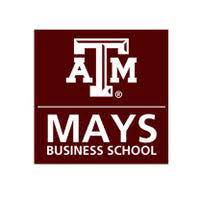
Mays Business School, Texas A&M University, College Station

R. Duane Ireland (Interim)
History
Business education was first offered at Texas Agricultural and Mechanical College in conjunction with mechanical and agricultural programs. From 1876 through 1920 students at Texas A&M could select from a small number of business courses including single and double-entry bookkeeping and creamery management. In the 1920s the Department of Economics and the Agricultural Administration programs began offering further business courses, and by the end of the decade the college had established departments for accounting and statistics, farm and ranch management, marketing, and finance.
Shortly after World War II, Thomas W. Leland became the first department head of the newly created Department of Business and Accounting, under the umbrella of the School of Arts and Sciences. After Leland's retirement in 1961, the School of Business Administration formed. By 1965 the new head of the department, John E. Pearson, had spearheaded the formation of several departments within the School of Business, including accounting, business analysis and research, finance, marketing, and management. The Master of Business Administration (MBA) program debuted in 1966, and two years later in 1968, the college was officially formed when Texas A&M received University status, and the School of Business became the College of Business Administration. The college was accredited by the American Assembly of Collegiate Schools of Business in 1972, and began awarding Ph.D.s the same year. Over the next several decades the college continued to grow, establishing various centres, including the Center for International Business Studies and the Center for Human Resources Management, and implementing new bachelor's degrees.
The College of Business moved into the newly built Wehner Building on the western edge of Texas A&M University's campus in 1995. The following year the College was endowed by Lowry Mays, founder of Clear Channel Communications, and in his honour was renamed Lowry Mays College & Graduate School of Business. Six-years later, the name was simplified to Mays Business School.
Courses
Master of Business Administration in Business Administration:
The Mays Business School offers a graduate program leading to the degree of Master of Business Administration (MBA). Enrolment in the Mays MBA Program and related courses is restricted to students in the classification G7 BUAD. A G6 student is not eligible to enrol in Mays MBA Program courses.
Mays Executive MBA Program:
The Mays Business School offers an Executive MBA Program (EMBA) leading to the degree of Master of Business Administration (MBA) for working professionals with significant professional and managerial experience. Selected EMBA participants only are eligible to enrol in the Mays Executive MBA Program courses.
Mays Professional MBA Program:
The Mays Business School offers a Professional MBA Program leading to the degree of Master of Business Administration (MBA) for business professionals with professional work experience. Only students selected and admitted into the Professional MBA are eligible to enrol in the Mays Professional MBA Program courses.
Master of Business Administration in Business Administration and Master of Science in Analytics Combined Degree Program:
The Mays Business School offers a combined full-time MBA and MS Analytics degree program leading to the degrees of Master of Business Administration (MBA) and a Master of Science in Analytics (MSA) for professionals with three or more years’ work experience. The combined MBA/MS Analytics degree is designed to transform professionals interested in leading organisations with a data-driven mindset to gain greater value from an organisation’s data and ultimately providing a competitive advantage. The benefits for students in this program include a skill-set with a high return on investment and the ability to use data to identify and solve complex problems. Selected participants only are eligible to enrol in the combined MBA program and MS Analytics courses.
Global MBA rankings
| Financial Times | #96 globally | 2022 |
| Forbes | #12 U.S. public | 2019 |
| Fortune | #9 U.S. public #25 Overall | 2022 |
| Princeton Review | #8 Best Professors #3 Best Administered #10 Best MBA for Operations | 2021 |
| QS Global MBA Ranking | #12 U.S. public (#31 U.S. overall) | 2019 |
| U.S. News & World Report | #16 U.S. public (#38 U.S. overall) | 2022 |
| Bloomberg Businessweek | #22 U.S. public (#49 overall) | 2018 |
| MBA - Executive Program | ||
| Fortune | #1 in Texas #4 U.S. Public Schools | 2022 |
| Financial Times | #5 US Public Schools Work Exp: # 2 US Public Schools Salary: #1 in Texas | 2022 |
| U.S. News & World Report | #9 U.S. public (#22 overall) | 2021 |
| Economist | #1 Texas public #9 U.S. public (#21 overall) #37 Global overall | 2020 |
| Expansión | #9 U.S. public (#46 in world) Best Global MBAs for Mexicans | 2018 |
| MBA - Professional Program | ||
| U.S. News & World Report | #23 U.S. public (#39 overall) | 2022 |
| MS Analytics Program | ||
| Fortune | #1 overall | 2022 |
| U.S. News & World Report | #2 in Texas #16 overall for Best Master’s in Business | 2022 |
Job integration rate
According to Mays, 95.4 percent of MBA students seeking employment last year were placed within three months of graduation.
Explore the latest data on Business, Industry Leaders and Influencers, Organizations, Education, and Investors to stay informed and ahead.

R. Duane Ireland (Interim)
